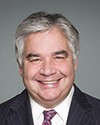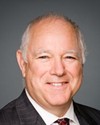moved:
That, notwithstanding any Standing Order or usual practice of the House, commencing upon the adoption of this Order and concluding on Friday, June 20, 2014:
(a) on Mondays, Tuesdays, Wednesdays and Thursdays, the ordinary hour of daily adjournment shall be 12 midnight, except that it shall be 10 p.m. on a day when a debate, pursuant to Standing Order 52 or 53.1, is to take place;
(b) subject to paragraph (d), when a recorded division is demanded in respect of a debatable motion, including any division arising as a consequence of the application of Standing Order 61(2), but not including any division in relation to the Business of Supply or arising as a consequence of an order made pursuant to Standing Order 57, (i) before 2 p.m. on a Monday, Tuesday, Wednesday or Thursday, it shall stand deferred until the conclusion of oral questions at that day’s sitting, or (ii) after 2 p.m. on a Monday, Tuesday, Wednesday or Thursday, or at any time on a Friday, it shall stand deferred until the conclusion of oral questions at the next sitting day that is not a Friday;
(c) the time provided for Government Orders shall not be extended pursuant to Standing Order 45(7.1);
(d) when a recorded division, which would have ordinarily been deemed deferred to immediately before the time provided for Private Members’ Business on a Wednesday governed by this Order, is demanded, the said division is deemed to have been deferred until the conclusion of oral questions on the same Wednesday;
(e) any recorded division which, at the time of the adoption of this Order, stands deferred to immediately before the time provided for Private Members’ Business on the Wednesday immediately following the adoption of this Order shall be deemed to stand deferred to the conclusion of oral questions on the same Wednesday;
(f) a recorded division demanded in respect of a motion to concur in a government bill at the report stage pursuant to Standing Order 76.1(9), where the bill has neither been amended nor debated at the report stage, shall be deferred in the manner prescribed by paragraph (b);
(g) for greater certainty, this Order shall not limit the application of Standing Order 45(7);
(h) no dilatory motion may be proposed, except by a Minister of the Crown, after 6:30 p.m.; and
(i) when debate on a motion for the concurrence in a report from a standing, standing joint or special committee is adjourned or interrupted, the debate shall again be considered on a day designated by the government, after consultation with the House Leaders of the other parties, but in any case not later than the twentieth sitting day after the interruption.
Mr. Speaker, I am pleased to rise to speak to the government's motion proposing that we work a little bit of overtime over the next few weeks in the House.
I have the pleasure of serving in my fourth year as the government House leader during the 41st Parliament. That is, of course, on top of another 22 months during a previous Parliament, though some days it feels like I am just getting started since our government continues to implement an ambitious agenda that focuses on the priorities of Canadians. We still have much to do, and that is the basis for Motion No. 10, which we are debating today. Regardless of what other theories that folks might come up with, our objective is simple: to deliver results for Canadians, results on things Canadians want to see from their government.
As government House leader, I have worked to have the House operate in a productive, orderly, and hard-working fashion. Canadians expect their members of Parliament to work hard and get things done on their behalf. We agree, and that is exactly what has happened here in the House of Commons. However, do not take my word for it. Let us look at the facts.
In the previous session of the 41st Parliament, 61 government bills received royal assent and are now law. In 2013 alone, which was a shorter parliamentary year than normal, the government had a record-breaking year with 40 bills becoming law, more than any other calendar year since we took office, breaking our previous record of 37 new laws in 2007 when I also had the honour to be the leader of the House. That is the record of a hard-working, orderly, and productive Parliament. With more than a year left in this Parliament, the House has accomplished so much already, handing many bills over to the Senate for the final steps in the legislative process.
Just as we had a record year for legislative output, Canadian grain farmers experienced a bumper crop with a record yield in 2013. Understanding the real challenges faced by grain farmers, our government acted quickly on Bill C-30, the fair rail for grain farmers act, moving the bill through three readings and a committee study before handing it over to the Senate. This bill would support economic growth by ensuring that grain is able to get to market quickly and efficiently. The House also passed Bill C-23, the fair elections act, which would ensure that everyday citizens are in charge of democracy, ensuring the integrity of our electoral system and putting rule breakers out of business.
Two supply bills received royal assent, thereby ensuring that the government has the money it needs to continue providing services to the people.
When we passed Bill C-25, the Qalipu Mi'kmaq First Nation Act, we fulfilled our promise to protect the Qalipu Mi'kmaq First Nation's enrolment process, making it fair and equitable while ensuring that only eligible individuals will be granted membership.
Earlier this spring, royal assent was also given to Bill C-16, the Sioux Valley Dakota Nation Governance Act, making the Sioux Valley Dakota Nation the first self-governing nation on the prairies and the 34th aboriginal community in Canada to achieve self-governance.
Next on the agenda is Bill C-34, the Tla'amin Final Agreement Act, which will implement the agreement with the Tla'amin Nation. Bill C-34 will give the Tla'amin increased control over their own affairs. They will have ownership of their land and resources and will be able to create new investment opportunities and make decisions determining their economic future.
We considered and passed through all stages of Bill C-5, the Offshore Health and Safety Act, which will enhance safety standards for workers in Canada’s Atlantic offshore oil and gas industry to protect Canadians and the environment while supporting jobs and growth.
Bill C-14, the Not Criminally Responsible Reform Act, became law just a few weeks ago. This act will ensure that public safety should be the paramount consideration in the decision-making process involving high-risk accused found not criminally responsible on account of mental disorder.
Also, this spring, our government passed Bill C-15, the Northwest Territories Devolution Act, which honoured our government's commitment to giving northerners greater control over their resources and decision-making and completing devolution all before the agreed-upon implementation date of April 1, as well as Bill C-9, the First Nations Elections Act, which supports the Government of Canada's commitment to provide all Canadians with strong, accountable, and transparent government. Bill C-9 provides a robust election framework, improves the capacity of first nations to select leadership, build prosperous communities, and improve economic development in their communities.
However, despite these many accomplishments, there is more work to be done yet before we return to our constituencies for the summer, let alone before we seek the privilege of representing our constituents in the 42nd Parliament.
During this mandate, our government's top priority has been jobs, economic growth and long-term prosperity.
It is worth saying that again. During this mandate, our government's top priority has been jobs, economic growth, and long-term prosperity. That continues. Through three years and four budgets since the 2012 budget, we have passed initiatives that have helped create hundreds of thousands of jobs for Canadians, as part of the one million net new jobs since the global economic downturn. We have achieved this record while also ensuring that Canada's debt burden is the lowest in the G7 and we are on track to balance the budget in 2015.
As part of our efforts to build on this strong track record, our government has put forward this motion today. Motion No. 10 is simple. It is straightforward. It would extend the hours of the House to sit from Monday through Thursday. Instead of finishing the day around 6:30 p.m. or 7 p.m., the House would, instead, sit until midnight. This would give us an additional 20 hours each week to debate important bills. Of course, the hours on Friday would not change.
Extended sitting hours is something that happens practically every June. Our government just wants to roll up its sleeves and work a little harder a bit earlier this year.
Productivity is not just a function of time invested, but also of efficiency. To that end, our motion would allow most votes to be deferred, automatically, until the end of question period to allow for all hon. members' schedules to be a bit more orderly.
Last year, we saw the New Democrats profess to be willing to work hard. Then, mere hours later, after the sun would go down and people were not watching, what would the NDP do? It would suggest we pack it in early and move adjournment, without any accomplishment to show for it.
In order to keep our focus on delivering results and not gamesmanship, we are suggesting that we use our extra evening hours to get something done, not to play idle, unproductive games. We are interested in working hard and being productive, and doing so in an orderly fashion. That is the extent of what Motion No. 10 would do. Members on this side of the House are willing to work a few extra hours to deliver real results for Canadians. What results are we seeking? Bills on which we want to see progress, that are of great significance to Canadians, are worth spending a little extra time to see them considered and, ideally, passed.
Of course, we have the important matter of passing Bill C-31, Economic Action Plan 2014, No. 1. This bill implements our government’s budget—a low-tax plan for jobs, growth and a stronger Canadian economy. It is also an essential tool in placing the government on track to balanced budgets, starting in 2015.
We have a number of bills that continue to build on the work we have done in support of victims of crime. Bill C-13, the Protecting Canadians from Online Crime Act, is another essential piece of legislation that will crack down on cyberbullies and online threats by giving law enforcement officials the tools necessary to investigate and tackle these crimes. We are taking clear action to combat cyberbullying and I ask the opposition to join us in this pursuit.
Every day in Canada, our most vulnerable—our children—are the victims of sexual abuse. This is truly unacceptable and as a society we must do our part to better protect our youth. With Bill C-26, the Tougher Penalties for Child Predators Act, we are doing our part.
Our government's comprehensive legislation will better protect children from a range of sexual offences, including child pornography, while making our streets and communities safer by cracking down on the predators who hurt, abuse, and exploit our children.
Therefore, I ask the opposition to work with us, support this important piece of legislation by supporting this motion.
It is also important that we move forward with one of the most recent additions to our roster of other tackling crime legislation. Last month, we introduced Bill C-32, the victims bill of rights act, which will give victims of crime a more efficient and more effective voice in the criminal justice system. It seeks to create clear statutory rights at the federal level for victims of crime, for the first time in Canada's history. The legislation would establish rights to information, protection, participation, and restitution, and ensure a complaint process is in place for breaches of those rights on the part of victims. It would protect victims, and help to rebalance the justice system to give victims their rightful place. I hope we can debate this bill tomorrow night. By passing Motion No. 10, we will make that possible.
Our efforts to protect families and communities also extend to keeping contraband tobacco off our streets, so that the cheap baggies of illegal cigarettes do not lure children into the dangers of smoking. Bill C-10, the tackling contraband tobacco act, would combat this by establishing mandatory jail time for repeat offenders trafficking in contraband. Aside from protecting Canadian children from the health hazards of smoking, it will also address the more general problems with trafficking and contraband tobacco propelled by organized crime roots. With luck, I hope we can pass this bill on Friday.
Just before the constituency week, the Prime Minister announced Quanto's law. Bill C-35, the justice for animals in service act, would pose stiffer penalties on anyone who kills or injures a law enforcement, military, or service animal. I know that the hon. member for Richmond Hill, having previously introduced a private member's bill on the subject, will be keen to see the extra time used to debate and pass this bill at second reading before we head back to our constituencies.
Bill C-12, the drug-free prisons act, could also have a chance for some debate time if we pass Motion No. 10. This particular bill will tackle drug use and trade in the federal penitentiaries to make the correctional system a safer place, particularly for staff, but also for inmates, while also increasing the potential for success and rehabilitation of those inmates. As a former public safety minister, I can say that this is indeed an important initiative.
Delivering these results for Canadians is worth working a few extra hours each week. Our clear and steady focus on the strength of our Canadian economy does not simply apply to our budgets. We will also work hard next week to bring the Canada-Honduras free trade agreement into law. Bill C-20, the Canada-Honduras economic growth and prosperity act, would enhance provisions on cross-border trading services, investment, and government procurement between our two countries. It would also immediately benefit key sectors in the Canadian economy, by providing enhanced market access for beef, pork, potato products, vegetable oils, and grain products.
As a former trade minister, I can say first-hand that this government understands that trade and investment are the twin engines of the global economy that lead to more growth, the creation of good jobs, and greater prosperity. Trade is particularly important for a country like Canada, one that is relatively small yet stands tall in terms of its relationship and ability to export and trade with the rest of the world. If we are to enjoy that prosperity in the future, it is only through expanding free trade and seizing those opportunities that we can look forward to that kind of long-term prosperity.
Through Bill C-18, the agricultural growth act, we are providing further support to Canada's agriculture producers. This bill would modernize nine statues that regulate Canada's agriculture sector to bring them in line with modern science and technology, innovation, and international practices within the agriculture industry. The act will strengthen and safeguard Canada's agriculture sector by providing farmers with greater access to new crop varieties, enhancing both trade opportunities and the safety of agriculture products, and contributing to Canada's overall economic growth.
As the House knows, our government has made the interests of farmers a very important priority. We recognize that since Canada was born, our farmers in our agriculture sector have been key to Canada's economic success. As a result, Bill C-18 will be debated this afternoon. It would be nice to have the bill passed at second reading before the summer, so that the agriculture committee can harvest stakeholder opinion this autumn.
Over the next few weeks, with the co-operation and support of the opposition parties, we will hopefully work to make progress on other important initiatives.
My good friend, the President of the Treasury Board, will be happy to know that these extra hours would mean that I can find some time to debate Bill C-21, the red tape reduction act. This important bill should not be underestimated. It would enshrine into law our government's one-for-one rule, a successful system-wide control on regulatory red tape that affects Canadian employers. Treasury Board already takes seriously the practice of opining that rule, but we want to heighten its importance and ensure that it is binding on governments in the future. We want to ensure that Canadians do not face unreasonable red tape when they are simply trying to make a better living for themselves, and creating jobs and economic growth in their communities.
Another important government initiative sets out to strengthen the value of Canadian citizenship. For the first time in more than 35 years, our government is taking action to update the Citizenship Act. Through Bill C-24, the strengthening Canadian Citizenship Act, we are proposing stronger rules around access to Canadian citizenship to underline its true value and ensure that new Canadians are better prepared for full participation in Canadian life. This legislation will be called for debate on Wednesday.
The health and safety of Canadians is something that our government believes is worthy of some extra time and further hard work in the House of Commons.
Tomorrow evening, we will debate Bill C-17, the protecting Canadians from unsafe drugs act. Under Vanessa's law, as we have called it, we are proposing steps to protect Canadian families and children from unsafe medicines. Among other actions, the bill would enable the government to recall unsafe drugs, require stronger surveillance, provide the courts with discretion to impose stronger fines if violations were intentionally caused, and compel drug companies to do further testing on a product. In general, the bill would make sure that the interests of individual Canadians are looked out for and become a major priority when it comes to dealing with new medications and drugs.
Bill C-22, the energy safety and security act, would modernize safety and security for Canada's offshore and nuclear energy industries, thereby ensuring a world-class regulatory system, and strengthening safety and environmental protections. This legislation, at second reading, will be debated on Thursday.
Bill C-3, the safeguarding Canada's seas and skies act, could pass at third reading under the extended hours, so that we can secure these important updates and improvements to transportation law in Canada.
We could also pass the prohibiting cluster munitions act. As the Minister of Foreign Affairs explained at committee, the Government of Canada is committed to ridding the world of cluster munitions. Bill C-6 is an important step in that direction, but it is just the beginning of our work. Extending the relevant elements of the Oslo Convention into domestic law would allow Canada to join the growing list of countries that share that same goal. I hope members of all parties will support us in this worthy objective.
By supporting today's motion, the opposition would also be showing support for Canada's veterans. The extra hours would allow us to make progress on Bill C-27, the veterans hiring act. The measures included in this legislation would create new opportunities for men and women who have served their country to continue working for Canadians through the federal public service. As a nation, we have a responsibility to ensure that veterans have access to a broad range of programs and services to help them achieve new success after their time in uniform is complete. This initiative would do exactly that.
Of course, a quick reading of today's order paper would show that there are still more bills before the House of Commons for consideration and passage. I could go on and on, literally, since I have unlimited time to speak this afternoon, but I will not. Suffice it to say that we have a bold, ambitious, and important legislative agenda to implement. All of these measures are important, and they will improve the lives of Canadians. Each merits consideration and hard work on our part. Canadians expect each one of us to come to Ottawa to work hard, to vote on bills, to make decisions, and to get things done on their behalf.
I hope that opposition parties will be willing to support this reasonable plan and let it come to a vote. I am sure that members opposite would not be interested in going back to their constituents to say that they voted against working a little overtime before the House rises for the summer.
I commend this motion to the House and encourage all hon. members to vote for adding a few hours to our day to continue the work of our productive, orderly, and hard-working Parliament, and deliver real results for Canadians.








